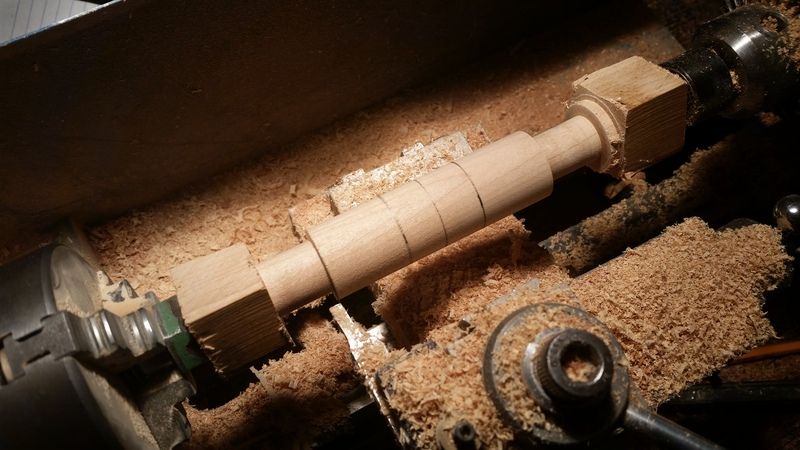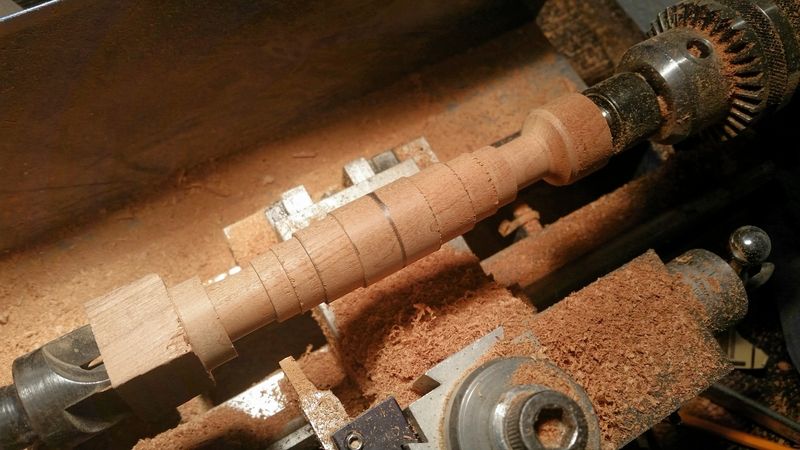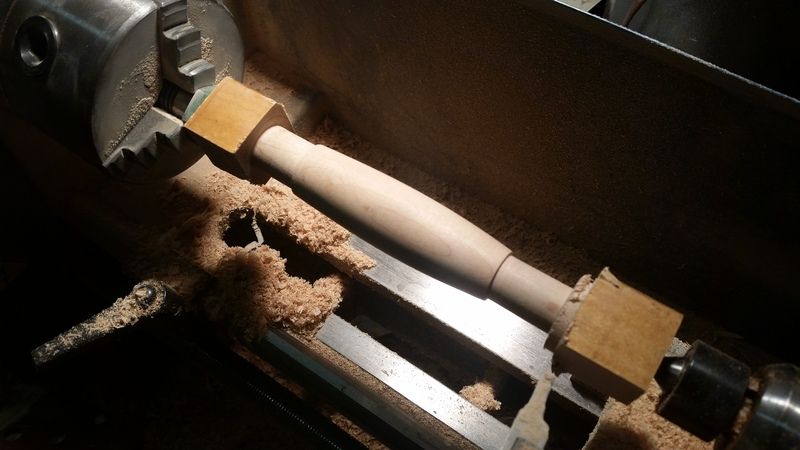Just started working on it this afternoon. This is modeled after one from the region around Karpacza in Poland. Though there are some slight differences in blade shape and significant differences in the turned handle, it is interesting how similar it is to other examples produced in Trattenbach, Austria as well as examples from France and Spain.
As I don't have access to the original and don't feel comfortable posting the photograph that I found online, I am providing my CAD drawing of the knife that I built based off the photographs and written documentation.
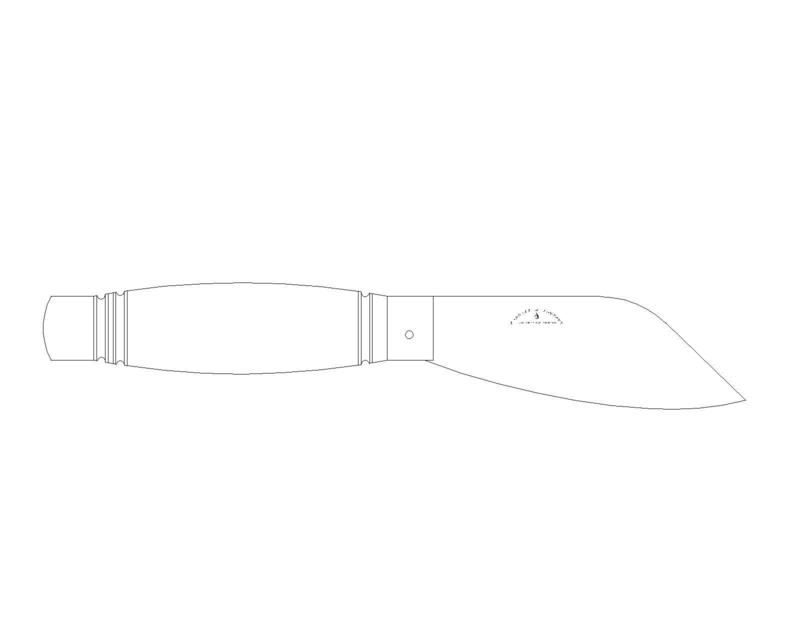
Here is my start of the handle. I am using maple here, though I suspect the original that I saw was beech. I think the palm swell makes this a much more comfortable knife to hold than the other Penny Knives that I have built in the past. The handle is a bit over 4 1/8" long and around 7/8 inch in diameter at the palm swell.
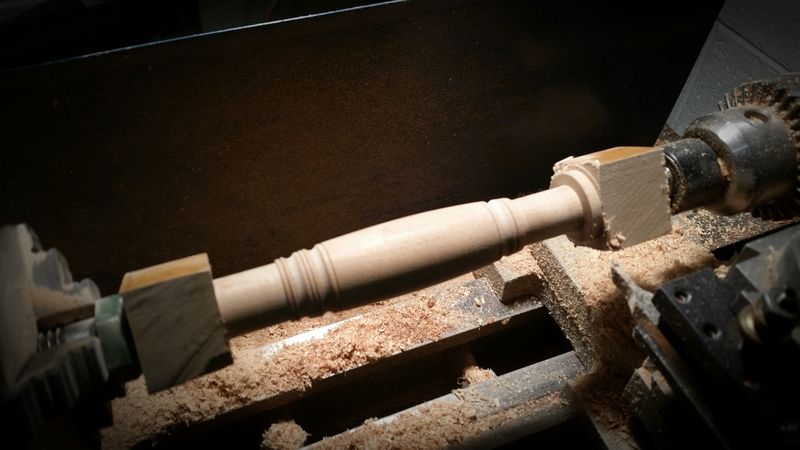
As I don't have access to the original and don't feel comfortable posting the photograph that I found online, I am providing my CAD drawing of the knife that I built based off the photographs and written documentation.

Here is my start of the handle. I am using maple here, though I suspect the original that I saw was beech. I think the palm swell makes this a much more comfortable knife to hold than the other Penny Knives that I have built in the past. The handle is a bit over 4 1/8" long and around 7/8 inch in diameter at the palm swell.







